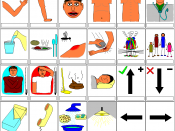The role of nonverbal communication within business meetings should not be over-rated. Nonverbal behavior does play a role and can help with victory in negotiations, but is not always the answer to negotiating successfully. Being aware of violating someone's personal zone or knowing when to be quiet is as important as knowing what to say and can carry the same consequences. In general, more successful persuaders were found to be smiling, nodding, and gesturing at appropriate moments during a business meeting or job interview. What is important to remember is to know when to use these various cues to your advantage, and to know not to overuse them.
Voices have a significant persuasive affect. These are: having louder amplitude, having a greater intonation, having greater fluency in speech, and having a faster tempo during speaking. It has been proved that when one has a louder and more fluent voice they were more likely to get a favorable decision on a job interview or in a legal battle.
Faster tempos have a more persuasive affect by exhibiting expertise and competence. But, there is a limit. Speaking tempos greater than 375 syllables per minute decrease their persuasive affect with faster tempos exhibiting greater and greater levels of loss of persuasiveness. Non-verbal communication is a much broader area of the process that may be more difficult to get a hold of in order to reach a level of being effective and not being misunderstood. This area of communicating possesses more impact on a person than verbal communication. Several experts on communication agree that actions speak louder than words.
Non-verbal communication is made up of the following parts:
Visual The area of visual non-verbal communication is most known as body language and consists of several means of communicating without having to speak a word.


